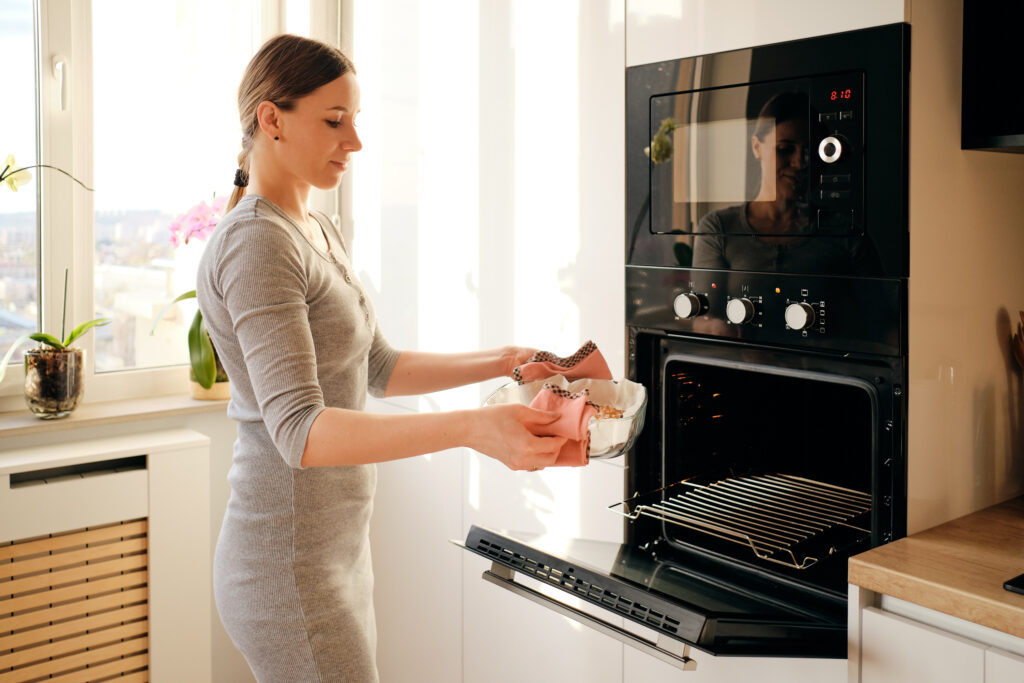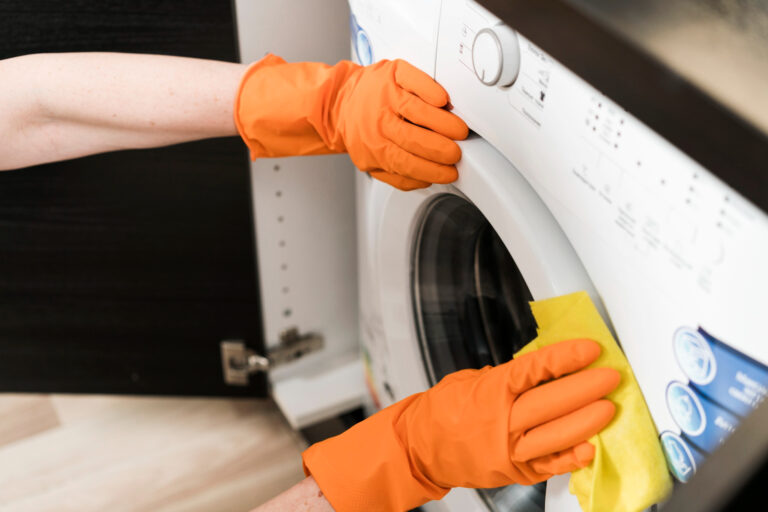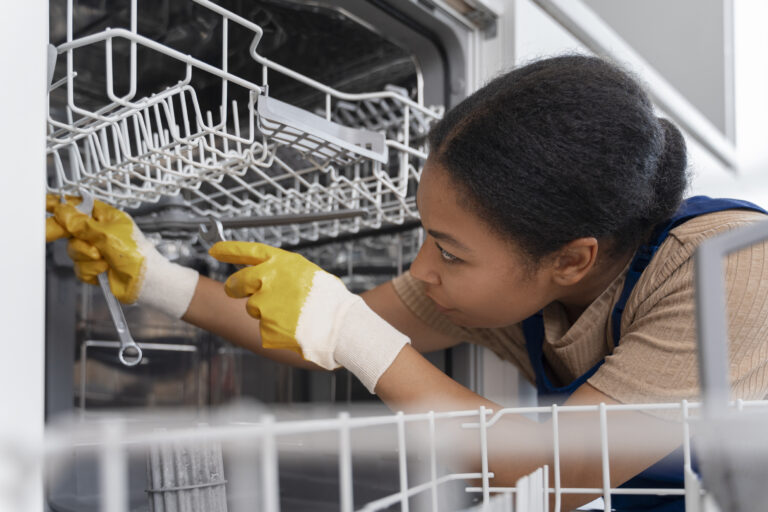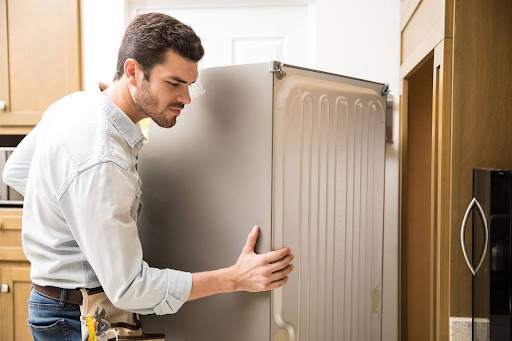A wall oven is more than just a kitchen appliance; it is a key component of a well-designed and efficient cooking space. Whether you’re planning a complete kitchen renovation or replacing an outdated oven, choosing the right wall oven can significantly enhance your cooking experience and overall kitchen functionality.
This comprehensive guide will walk you through the most important considerations when purchasing a wall oven for your home. We’ll also explain when it’s more cost-effective to call an oven repair specialist instead of replacing the unit and where to find reliable appliance repair services, particularly if you’re located in or near Lorton, Virginia.
What Is a Wall Oven and Why Choose One?
A wall oven is a built-in appliance that fits directly into your kitchen cabinetry, separate from the stovetop or range. Wall ovens are popular for their space-saving integration, ergonomic access, and ability to create a seamless, high-end kitchen appearance. Because they are mounted at chest or eye level, wall ovens eliminate the need to bend over when placing or removing hot trays, making them safer and more comfortable to use.
Homeowners often choose wall ovens for their:
- Modern aesthetics
- Customizable placement
- Flexible kitchen layouts
- Availability in single or double units
Top Considerations When Buying a Wall Oven
Before making a purchase, it’s important to assess several critical factors to ensure the oven you choose fits your space, cooking style, and long-term needs.
1. Oven Size and Cabinet Fit
Wall ovens come in standard widths typically 24″, 27″, or 30″—but can vary in height depending on whether you choose a single, double, or combination unit. Always measure your cabinet cutout dimensions before shopping. If you’re replacing an old oven, check the manufacturer’s specs and installation guide to ensure compatibility.
Tip: Consider your cooking habits. A larger capacity is ideal for big families or holiday meals, while a compact model might suit smaller households or secondary kitchens.
2. Single vs. Double Oven Configuration
- Single Wall Oven: A single cavity suitable for most households. Offers simplicity and is generally more affordable.
- Double Wall Oven: Provides two separate oven cavities, perfect for cooking multiple dishes at different temperatures simultaneously.
- Combination Wall Oven: Includes a microwave or steam oven paired with a traditional oven. Ideal for saving space and increasing cooking options.
3. Fuel Type: Electric vs. Gas
Understanding your home’s utility setup is crucial in selecting the appropriate oven.
Electric Wall Ovens
- Most common type, especially in modern homes.
- Provide consistent heat distribution and even baking.
- Available with advanced features like convection, steam, and smart controls.
- Ideal for homes without a gas line.
Gas Wall Ovens
- Less common for wall installations but still available.
- Preferred by traditional cooks for instant heat and lower energy costs.
- Require proper ventilation and professional installation.
- Often limited in advanced features compared to electric models.
4. Cooking Technologies and Features
Modern wall ovens come with a wide range of technologies that enhance cooking performance, convenience, and energy efficiency.
- Convection Cooking: A fan circulates hot air inside the oven, reducing cooking time and ensuring even results.
- Air Fry Mode: Found in newer models, allows for healthier crisping without additional appliances.
- Smart Features: WiFi-enabled ovens can be controlled via smartphone apps, voice assistants, or remote monitoring.
- Self-Cleaning Function: High-temperature cycles burn off residue, eliminating the need for manual scrubbing.
- Glide-Out Racks: Allow safer handling of heavy trays and cookware.
- Multi-Rack Cooking: Ideal for batch baking or cooking for large gatherings.
5. Temperature Range and Precision
Different dishes require different temperature settings. A wide temperature range—from 80°F to 500°F—is beneficial. High-end models often offer low-temp options for proofing dough and dehydrating, as well as high-temp settings for broiling or pizza baking.
6. Energy Efficiency and Safety
Look for ovens with Energy Star ratings or classifications like A, A+, or A++ to ensure efficient electricity usage. Safety features such as child locks, automatic shut-off, and cool-touch doors can be essential for families with young children.
7. Oven Design and Door Style
Wall ovens feature either:
- Drop-down doors: Traditional, common, and widely available.
- Side-opening doors: Easier to reach into the cavity, more ergonomic.
- French doors: Elegant and functional, opening with two side panels—often seen in high-end models.
Choose a design that complements your kitchen layout and personal preference.
When to Repair Instead of Replace
If your current wall oven isn’t functioning correctly—whether it’s uneven cooking, electrical issues, or error codes it may not need immediate replacement. Sometimes a quick fix by an experienced oven repair specialist can extend your appliance’s lifespan by several years.
Common oven repair issues include:
- Malfunctioning thermostats
- Faulty heating elements
- Door seal damage
- Control panel failure
- Broken fans or motors
Regular maintenance and professional servicing can save you money and reduce waste, making it a sustainable alternative to replacement.
Reliable Appliance Repair Services in Lorton, Virginia
If you’re experiencing oven issues and live in Northern Virginia, don’t worry—expert help is close by.
At ProTech Appliance Repairs, we offer top-tier appliance repair services in Lorton, Virginia, including professional diagnostics and dependable repairs for all major wall oven brands. Our team of certified technicians has extensive experience in both gas and electric oven repair, ensuring safe, fast, and affordable service.
We take pride in being a reliable appliance repair provider trusted by homeowners across the region.

Conclusion
Choosing the right wall oven for your kitchen involves more than just selecting a brand or price point. It’s about understanding your cooking habits, measuring your space accurately, and knowing which features truly add value to your home. Whether you prefer the precision of an electric oven or the fast heat of a gas model, today’s market offers options to suit every household.
However, before you replace a malfunctioning oven, consider whether a professional repair might be the smarter option. Many performance issues can be resolved quickly and affordably with the help of an experienced oven repair specialist.





